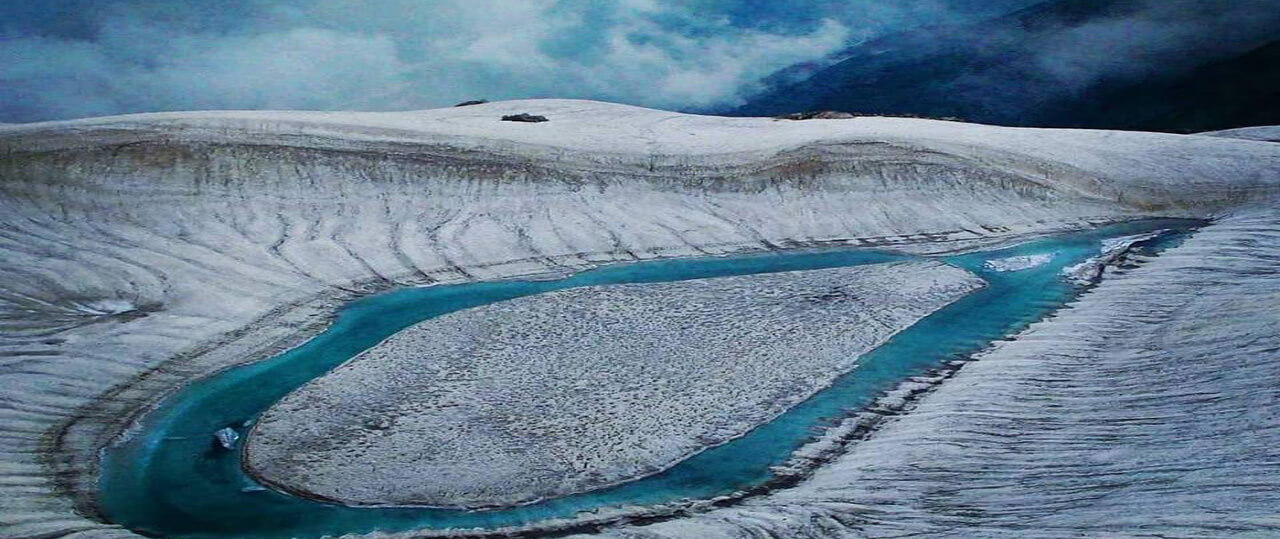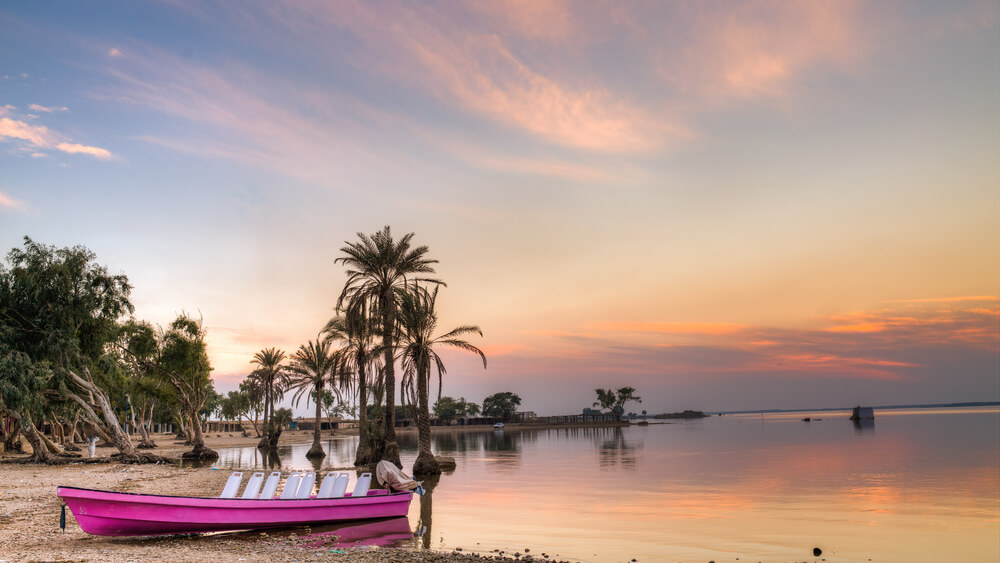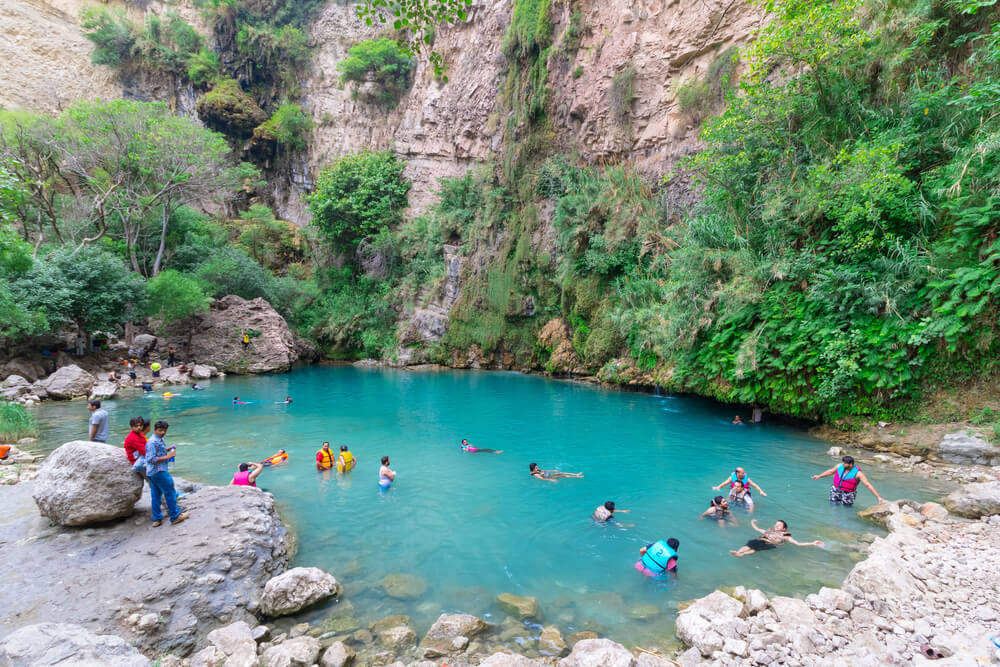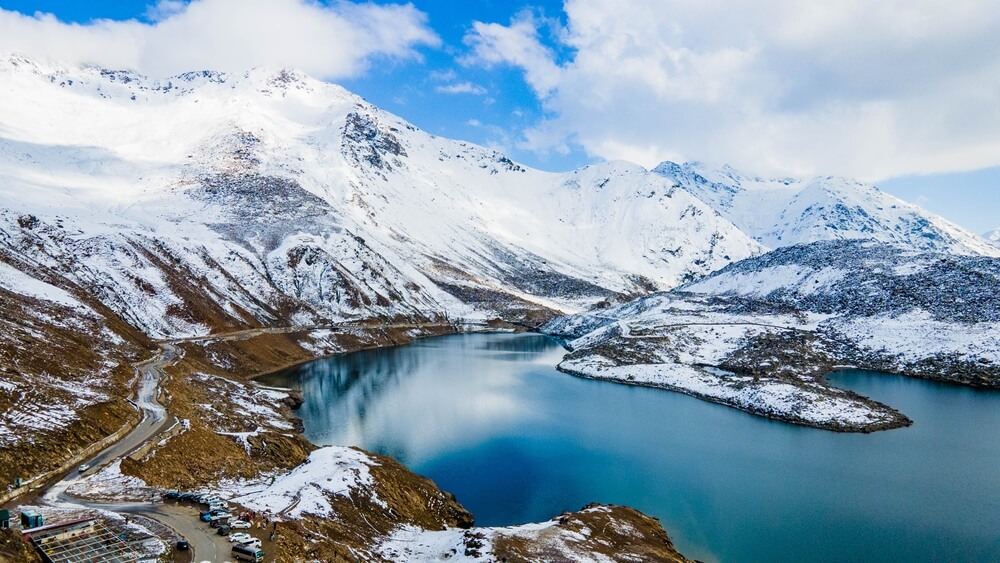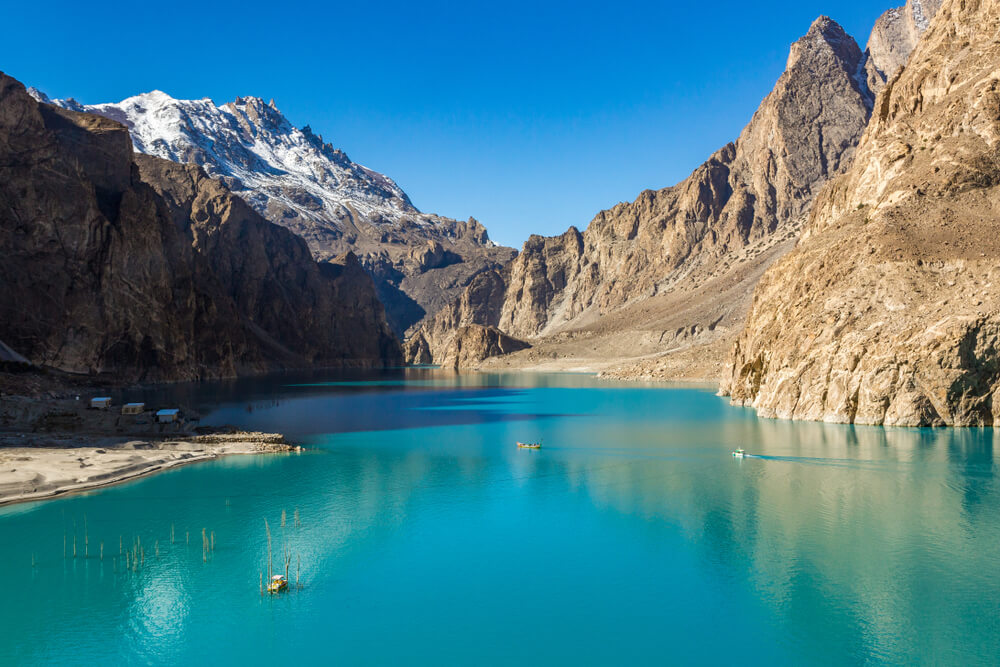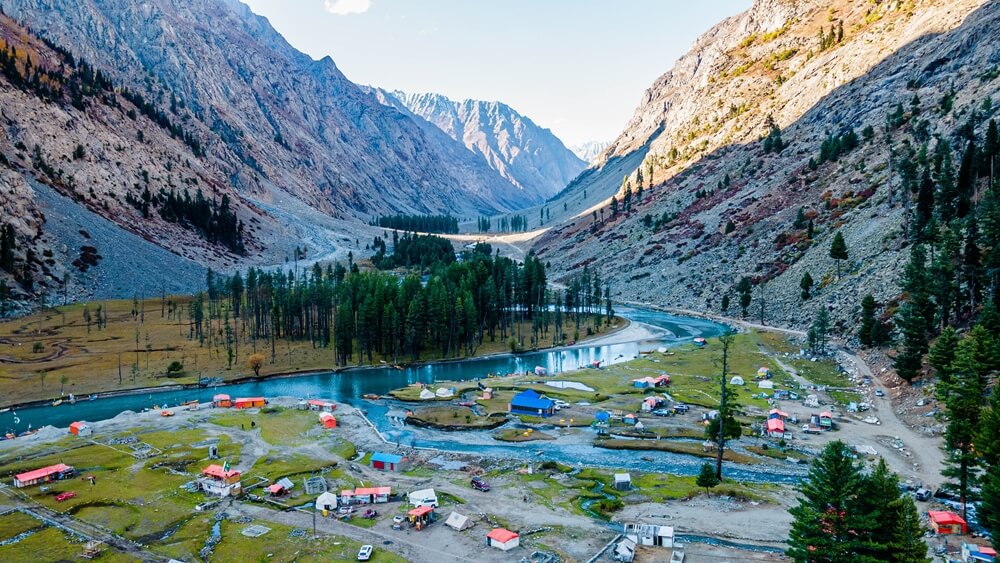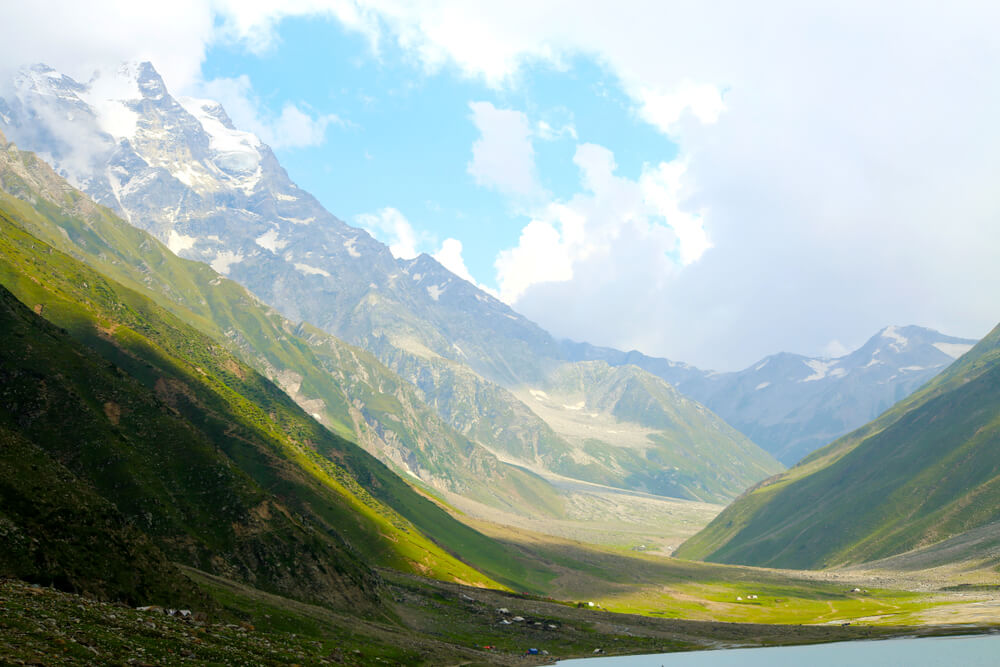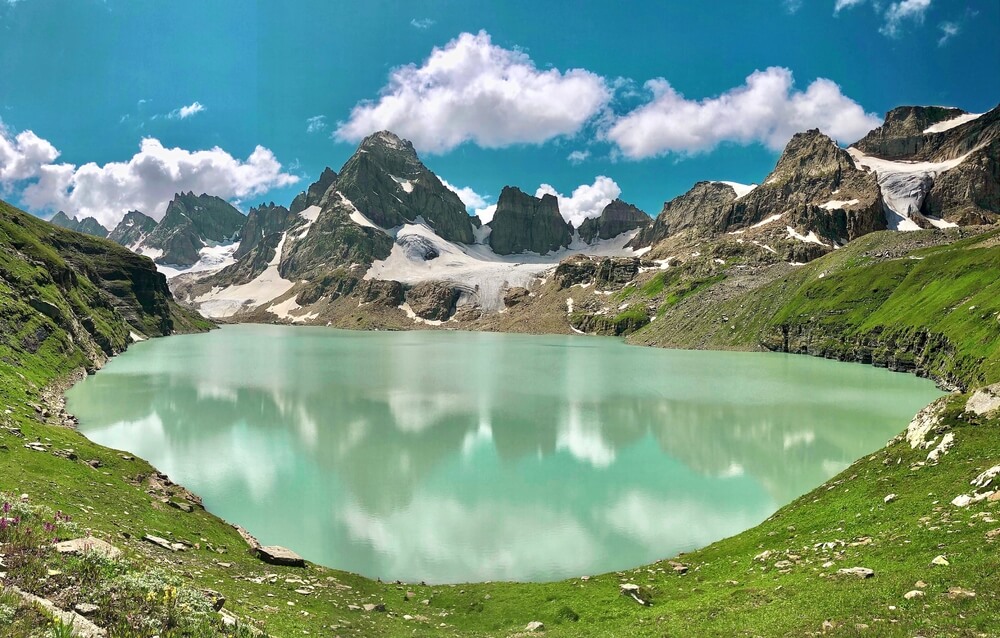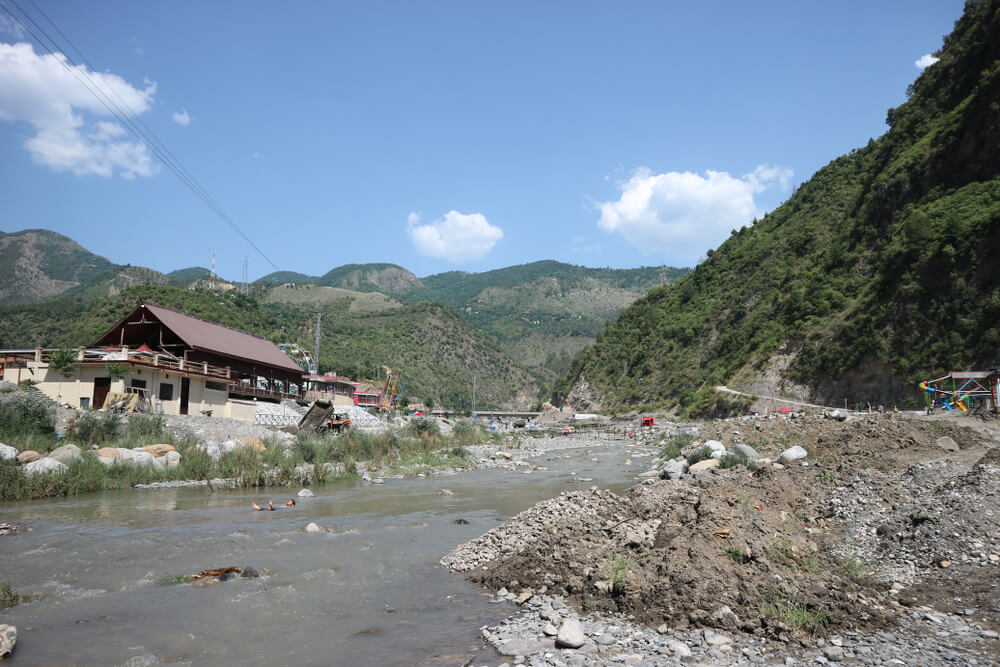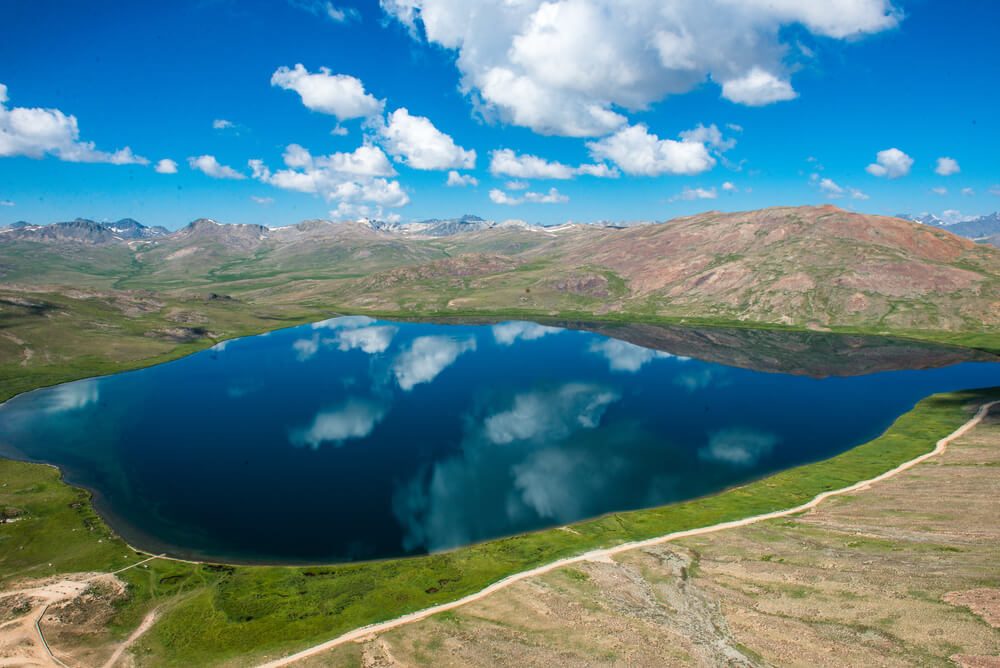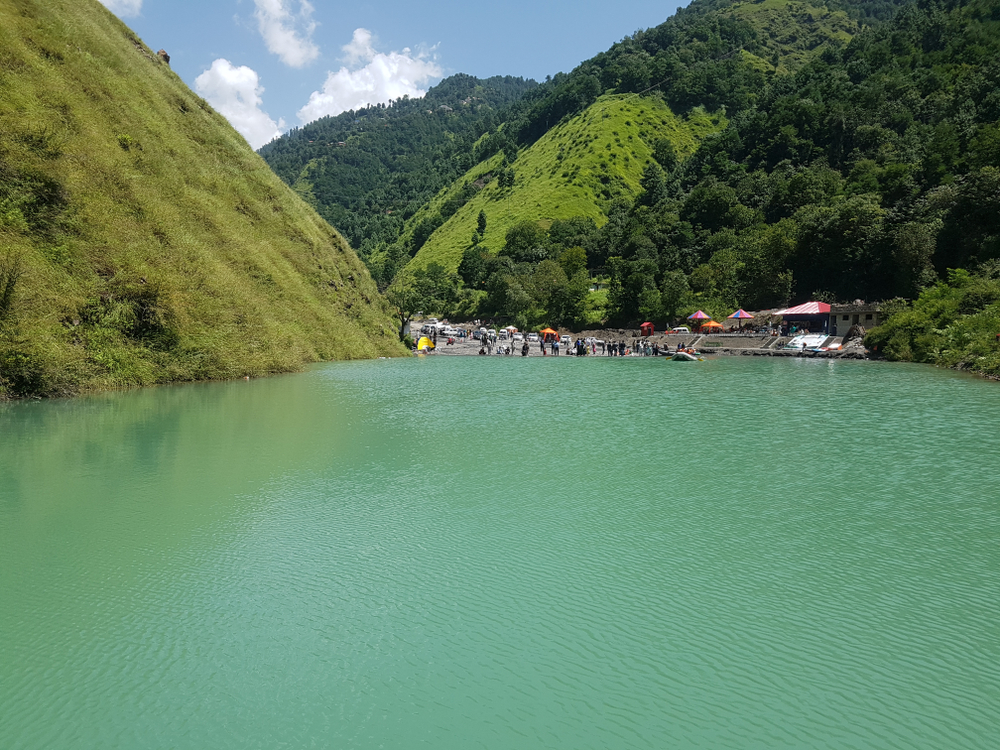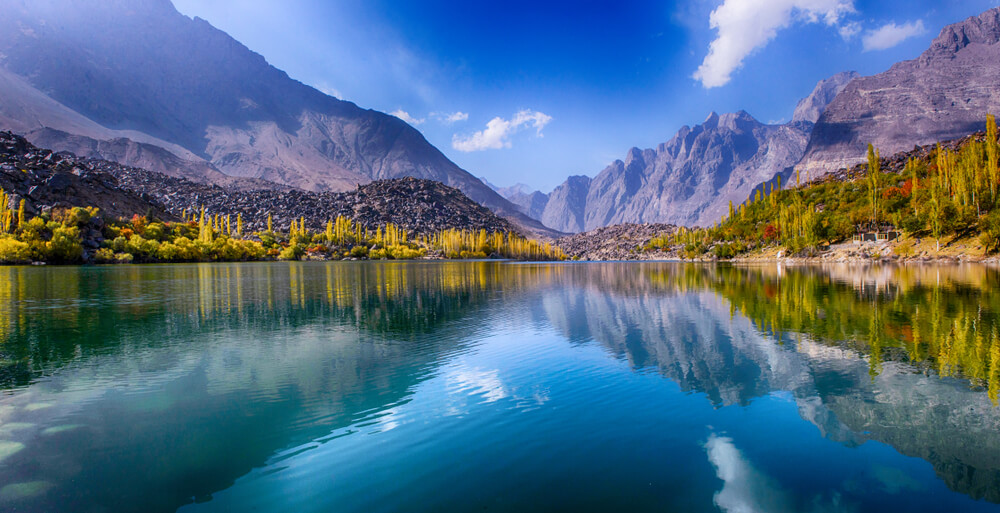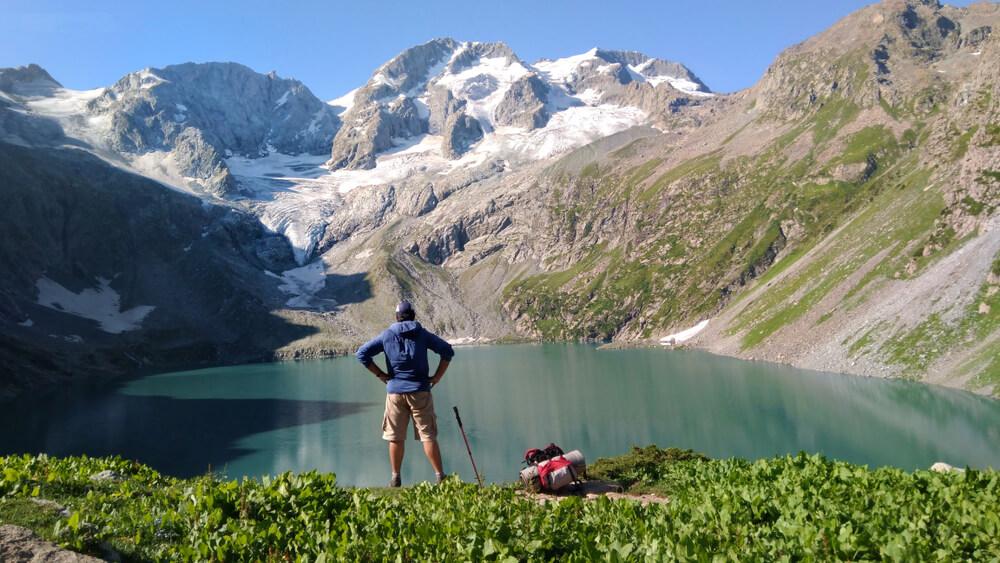Beautiful Lakes in Pakistan
Pakistan is a landlocked country in South Asia bordered by India to the North, China to the east, Afghanistan to the west, and Nepal and Bhutan to the south. The geographical location of Pakistan has made it one of the most strategically important locations for trade and commerce in South Asia. The country is home to four of the largest freshwater lakes in the world: Indus, Jhelum, Chenab, and Sutlej. The four freshwater lakes in Pakistan check one of Pakistan’s main weaknesses: its over-reliance on hydropower as an energy source. One such lake is Sheosar Lake or Samundar Katha Lake.
Pakistan has thousands of dams, which have created many lakes over time. Most of these lakes in Pakistan are entirely natural and do not supply drinking water to the people around them. However, several artificial lakes in Pakistan provide drinking water directly to people near their shores and draw excess moisture from other sources under controlled conditions. One such lake is Sogha Lake. Another such lake is Harnoi Lake. Here is a list of lakes in Pakistan:
70 Most Beautiful Lakes in Pakistan
1. Ansoo Lake
Ansoo Lake is one of the top lakes in Pakistan. It is in Kaghan Valley in the Mansehra District of Khyber Pakhtunkhwa, Pakistan. It is touted as one of the biggest lakes in Pakistan, situated in the Himalayas Range. Malika Peak, the highest peak in Kaghan Valley, is near the lake. The lake’s shape is due to its immersion in a teardrop state. Ansoo means “teardrop” in Urdu, and the Lake’s Arabic name is ملیك اناو. The Pakistan Air Force pilots who discovered it in 1993 were flying at a relatively low altitude over the area.
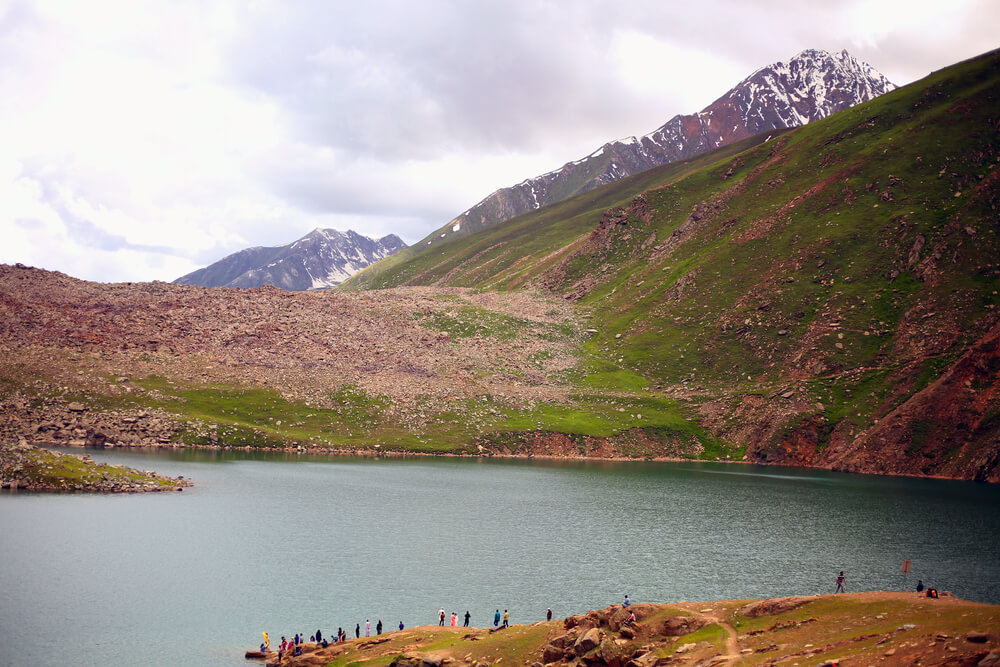
2. Attabad Lake
In the Gojal Valley of Hunza, Attabad Lake is one of the most beautiful lakes in Pakistan. Formed in 2010 after a landslide blocked the flow of the Hunza River, the lake is now over 19 kilometers long. It is a popular spot for fishing, boating, and camping—stunning mountains and crystal-clear waters around the lake, perfect for a refreshing swim.
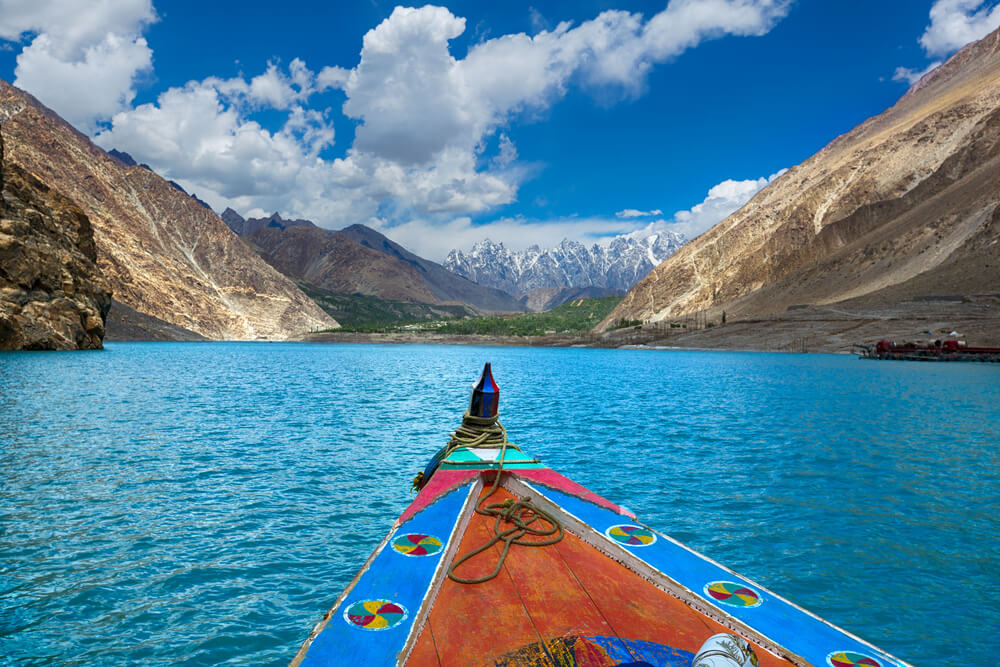
Hunza’s Attabad Lake owed its creation to an enormous landslide in 2010, the same year the lake was discovered by the Pakistani public and became famous worldwide. For centuries before that, however, it was known to locals as Gojal Lake, which meant the lake of heart or loved one’s seat in the local Shina language. The name comes from Mount Gojal in Hunza-Nagar District, a popular stopover point on journeys through the region before roads were built. Attabad Lake is one of the biggest lakes in Pakistan. The lake is fed by two rivers, the Attabad and the Ravi. It was created by a dam built in the 1930s to supply water to Tehran. It was the largest artificial lake in the world when it was built, but other lakes in Pakistan have since surpassed it.
3. Banjosa Lake
Banjosa Lake is an artificial lake in the Azad Kashmir region of Pakistan. It was created in 1992 and covers an area of 3.5 square kilometers. Lush green mountains and forests surround the lake, and it is a popular spot for picnics and hiking. Banjosa Lake is also home to various wildlife, including ducks, freshwater fish, and reptiles.
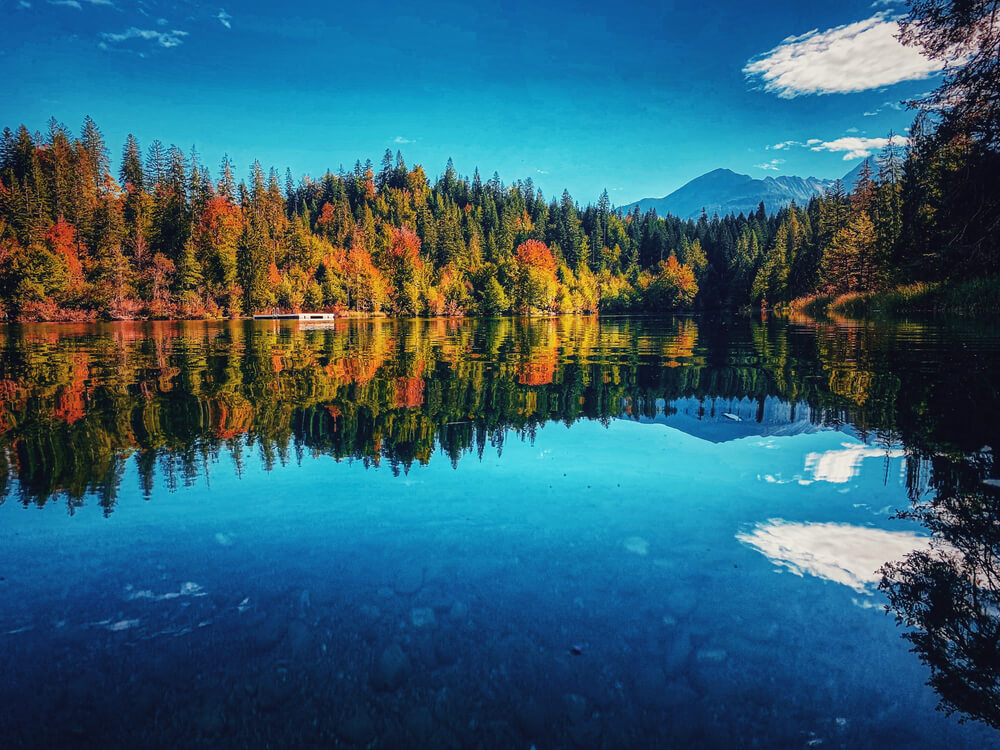
4. Batura Lake
It is one of the most beautiful lakes in Pakistan. It’s a high-altitude lake located in the Hunza Valley in the Gilgit-Baltistan region. The lake is fed by glaciers and snowmelt from the surrounding mountains, and it’s a popular spot for fishing, boating, and camping. The views of the lake and the surrounding mountains are stunning, and it’s worth a visit if you’re ever in Pakistan.

5. Chitta Katha Lake
One of the most beautiful lakes in Pakistan is Chitta Katha Lake. It’s located in the northern part of the country and is a popular spot for fishing, swimming, and boating. The lake is also surrounded by lush greenery, making it a perfect place to relax and enjoy nature. If you want a breathtaking freshwater lake to add to your travel list, put Chitta Katha Lake at the top!

6. Baghsar Lake
The Bhirrana River feeds the lake, which originates in the Achanai Valley of Bhimber District and flows through the northern part of the Samahni Valley before emptying into Baghsar Lake. The Bhirrana is dammed at the confluence of the Bandala River and the Samahni River to form the Mahal. The Mahal flows into Baghsar Lake, where the Bandala River joins it from the south.
The Bandala River originates in Samahni Valley and flows through the northern part of the Samahni Valley before emptying into Baghsar Lake. The Bandala River is dammed at the confluence of the Samahni and Bhirrana Rivers to form the Baghsar Lake. The Baghsar Lake is about 975 meters above sea level. The Bandala Valley is a broad valley between the high hills of Bhimber District and the Samahni Valley of Azad Kashmir. The Bandala Valley is a popular tourist destination. The Bandala River is a tributary of the Bhimber River.
7. Barah Lake
Its elevation is 3230 meters, and its location is in Khaplu, Skardu. The remote Barah Valley is a village found within Gilgit Baltistan. It can be reached after driving approximately 100 kilometers from Skardu towards the east. The valley lies on the banks of the Shyok River, which flows through it before joining Ladakh next door for a total length of 220 miles. There are two lakes here that locals refer to as Barah. These exist nearly 5000 feet above sea level – making them perfect for bathing during summers or when one experiences altitude sickness.
8. Borith Lake
It is about a two-kilometer distance from the city of Gulmit and is best reached by a jeep trail. This body of water rests in a small valley at an elevation of around 8,200 feet or 2,500 meters from ground level. The shortest way to reach it would be through Husseini Village, accessed by traveling across Ghulkin Glacier or Gulmit Village.

Borith Lake has been known to become home to migrating birds such as ducks. These birds come here during late spring and early summer (March to June) before heading North to escape the heat. Going southward means seeing them during autumn months instead because they are fleeing cold weather coming this way again.
9. Chotiari Lake
Chotiari Lake is an artificial water reservoir located about 35 kilometers from Sanghar in the province of Sindh, Pakistan. It is one of the top Lakes in Pakistan and a popular destination for tourists worldwide who love visiting this tranquil area during their stay in nearby Karachi.
10. Dakholi Lake
It is a picturesque mountain lake high at 4,839 meters (15,876 ft) but still needs to be explored due to its remoteness. The lake is part of the Khaplu Brow and Surmo Valley, Ghanche District, Gilgit-Baltistan. Sumo Valley derives its name from Sermo – which means Gold in Urdu, and Mo meaning Female in English.
This valley sits on the left bank of the Hunza River at 2200 meters above sea level just below Mount Karpogo. The mountainous terrain has created some beautiful vistas, including one where you see Haromi peak looming over Dakoli opposite mound Sumo Niwa famous for cave paintings as well as home to black stone slabs or dolmens or ancient graves protruding at least 20 meters out of the ground level right below water line making it deepest place within the vicinity.
11. Daral Lake
It, also referred to as Daral Dand by locals, is an alpine turquoise lake high up in Bahrain’s hills. A vast expanse of water covers most of the surrounding land. Situated next to this beautiful lake is an old Mosque; followers come here frequently for prayer and to look at the natural beauty around them—even during their rest before they set off on another day’s journey.
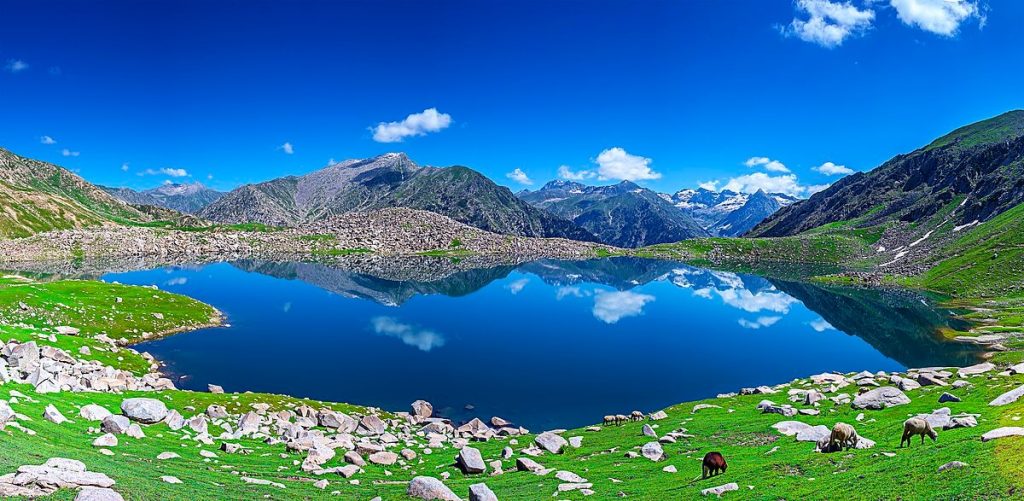
12. Drigh Lake
It is situated in Qambar Shahdadkot District in Sindh, Pakistan. Located less than 20 miles away from Larkana city and less than 8 miles away from Qambar town, it has a surface area of 409 acres (166 hectares), and the length of the Lake from North to South is about 6.32 Miles long (10 kilometers). Formed during three significant floods in 1814, 1815, and 1817, which destroyed villages across the province, Drigh Lake became a place for people to live after those villages were washed away.
13. The Dudipatsar Lake
Snowy peaks in the Lulusar-Dudipat National Park surround Dudipatsar Lake, which is surrounded by snowy peaks in the Lulusar-Dudipat National Park. It is situated in the Northern part of Kaghan Valley and has an elevation of 3,800 meters (12,500 ft). The nearby mountain ranges are above 4,800 meters (15,700ft), with higher elevations nearing 6,000 meters. They naturally inhabit the Western Himalayan Alpine Shrub & Meadows Ecoregion.

14. Lake Ganga Sar
It is one of the top lakes in Pakistan, at 9,653 feet tall (2,952 meters). This freshwater lake is near Mount Pir Panjal in Pakistan and can only be accessed by climbing a steep mountain path.
15. The Ghanche Lake
The Ghanche Lake sits at an elevation of 4,600 meters high up in the mountains. There are many different kinds of flora and fauna just below it. The sun glimmers off nearby streams while reflecting off the snow-capped glaciers, giving this place such a serene feel that it almost feels fake.
16. Hadero Lake
It is a small wetland home to many waterbirds and insects. Located near the border of Sindh, Pakistan, it has been designated as a game sanctuary and later as a wildlife sanctuary. Some animals are geese, herons, egrets, ibises, spoonbills, sandpipers, and curlews. They feed in the shallows or on nearby vegetation during high tide when little room is left.

The lake wasn’t always such a tranquil place—just over thirty years ago, people could hunt for fish here during the day, but now hunting is prohibited during the breeding season for its inhabitants: white pelicans, Asian openbills, Eurasian collared doves, African sacred ibis, painted snipes, Burhinidae redshanks, etc., which live among grassy clumps at the edges or rest on mudflats exposed at low tide near patches of reeds.
17. Haleji Lake
Haleji Lake was a saltwater body until it was converted into a dam to provide Karachi with more fresh water. As troops were stationed in Karachi in WWII, extra water was needed. So the British government of Sindh Province introduced a feeder canal from the Indus River. This caused some saltwater to drain out while they built an earthen wall around it. It created a way for fresh river water – typically overflows during floods – to enter it again, completing the construction project within two years.
18. Hamal Lake
It is a freshwater body in Qambar Shahdadkot District, Sindh, Pakistan. Inhabiting a space of 1200 hectares, it stretches across 2965 acres of land, with its surface area being 25 kilometers long and 10 kilometers wide. This artificial body of water was created when the nearby Kirthar mountain streams were diverted to feed irrigation. The Hamal Lake supplies food for many kinds of animals such as ducks, geese, coots, shorebirds, and other aquatic life forms such as flamingos, herons, and ibises, along with gulls and terns while also acting as a breeding ground for fish spawn – all thanks to its natural ecosystem.

Sadly enough, nowadays, animal populations are shrinking due to polluted waters from the Hardin Drain that connects people’s houses directly to the lake without filtering them through septic tanks or treatment plants before letting them flow freely into the water supply.
19. Hanna Lake
It is situated amidst the rolling hills about 11 miles from Quetta City. It was created in 1894 during British colonial times when the area’s locals were displaced; it now stores much-needed water for those who reside nearby and those passing through.
The serene beauty of this tranquil spot makes it one of Balochistan’s most popular tourist destinations, perfect for family outings and picnics along its shores or even a game or two on its sandy banks. At the far end of the lake, you’ll find Hayat Durrani Water Sports Academy – home to HDWSA (the first organization in all of Balochistan to offer rowing, canoeing, kayaking, and sailing instruction) as well as an open space where families can swim after dark without worrying about snakes or other wild creatures lurking around!
20. Hrkolong Lake
Hrkolong Lake is located at an elevation of 4,126 meters (13,537 ft) in the Khaplu Valley region of Gilgit-Baltistan, northern Pakistan. It provides water for the townships surrounding it, Khaplu and Sumo.
21. Hub Lake
It is located near the Idaho border in Montana’s Superior. At an elevation of 5,698 ft, the National Forest is a small and remote glacier cirque lake. Two established campsites are nearby, and ‘leave no trace camping or recreation is encouraged. This mountain lake supports a local population of west-slope cutthroat trout that has substantial natural reproduction thanks to its proximity to the creekbed that runs into it.

Fishing alongside this scenic water source proves fruitful as there are plenty of places where people can cast nets safely, and it is not easy to reach any other areas along the rocky shores. The possibility for fishing exists around this picturesque place; however, stocking had ceased, most likely due to self-sustainability being reached over time due to low fishing pressure from all across Montana in recent years – averaging 51 angler days per year when surveys were taken in 1995.
22. Jahlar Lake
One can feel at peace when visiting Jahlar Lake. It is one of the most famous lakes in Pakistan and provides a sense of deep serenity, even though it may not be as well-known as other places around the valley because of its proximity. Roughly 148 acres wide and stretched over almost three miles, this lake is located near Jahr village. During winter, migratory birds fly here while they’re away from home during summer – returning after spending time with family and friends.
The water is firm and acidic, which makes it great for washing clothes without soap or detergent. Unlike Uchali Lake or Khabeki Lake, no boating or fishing activities are available here. Still, food vendors are nearby, offering snacks and drinks to enjoy while taking in all this beautiful place has to offer!
23. Kallar Kahar Lake
There are many lakes in Pakistan, but Kallar Kahar Lake stands out. Unlike other lakes in Pakistan, this one is located near an old town called Kallar Kahar, which is significant in Pakistani culture and history. Moreover, it is known as a saltwater lake that sits next to another popular destination called Takht-e-Babri. It has remained a historic landmark numerous times because it attracts people to worship at its stone archway, which locals believe to house divine power.
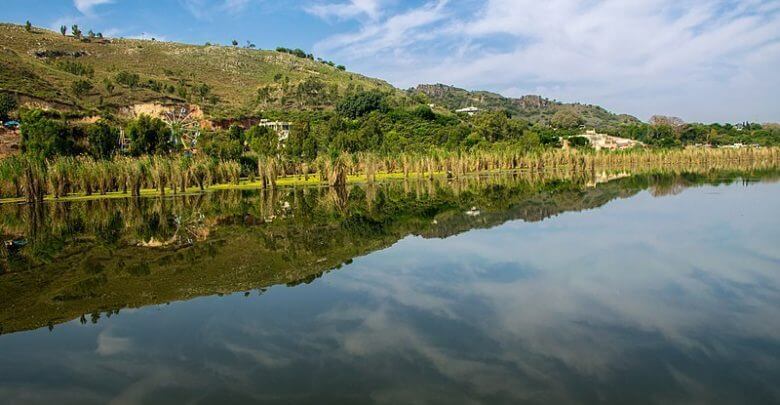
It can be found very close to a village called Moran Wali Sarkar (saint Hazrat Hou Bahu), which serves visitors from far and wide with much generosity when they visit these places near each other within Pakistan. Another thing locals talk about is their magnificent garden filled with so many different flowers of all sorts of colors; it truly is something spectacular you don’t want to miss out on if you’re lucky enough to come across them!
24. Karambar Lake, located in the Hindu Kush-Himalaya region of Pakistan, is one of many lakes situated at a high altitude. It is also known as Qurumbar Lake and is the 33rd-highest lake in the world due to its location amongst mountains.
25. Katora Lake
It is a serene body of water that rests at the very top of Kumrat Valley. With glaciers slowly melting from atop its cliff sides, this water feeds directly into Katora Lake. In Pashto, the name for this place translates to ‘bowl’ for its resemblance to this utensil. This beautiful scenery brings calmness and an overwhelming sense of freedom, which can only be found here – in these peaceful times when all we want to do is live without limits or barriers holding us back.
26. Keenjhar Lake
Keenjhar Lake, also known as Malik Lake, is one of the biggest lakes in Pakistan and has become a popular destination for locals due to its beauty. Located within 16 kilometers (10 miles) of Thatta, It is a recreation center and water supply point. Keenjhar Lake offers plentiful opportunities for picnicking and boating while providing refuge for many wildfowl and aquatic species.

Following it is a Ramsar site and wildlife sanctuary; many forms of animals find relief here, including, but not limited to, mammals such as deer, sheep, or buffalo; reptiles such as snakes or lizards; insects such as dragonflies or beetles; fish; crustaceans; lichens; mollusks; and plant life such as vines or seeds ̶ thus offering ample opportunity for animal lovers or interested individuals alike to explore nature without obstruction.
27. Khabikki Lake
It is a saltwater lake in the Soan Sakaser Valley of the south-eastern Salt Range in the Khushab District. The lake was formed because of an absence of drainage. It sits among the Uchhali Wetlands Complex and has been designated a Ramsar site. The lake spans 1 km across and extends over 2 km long, with gentle hills rising on either side. Named after the neighboring village that shares its name, this rural destination has boat rentals and two lodging options—complete with all the amenities required for a thoroughly enjoyable vacation experience!
28. Khalti Lake
It is situated in the Gupis-Yasin District, the westernmost part of the Gilgit-Baltistan region and the northernmost territory of Pakistan. This lake is one of Pakistan’s famous lakes, an essential source of fresh water, and has a trout stock. The water flowing here is so cold, coming straight from the glaciers surrounding it.
Usually, during winter, these lakes in Pakistan freeze over, giving people enough space to walk around on them freely without any fear or worry that they’ll fall through the ice. Khalti Lake is located in Khalti Village, Gupis-Yasin District (Gilgit-Baltistan), Pakistan, at about 2,217 meters above sea level – making this area one of the highest places you could find a natural freshwater reservoir supplying life for many living creatures who also call this place home!
29. Khanpur Lake
You can find the beautiful Lake Khanpur right off the highway connecting Taxila and Haripur. Built alongside Khanpur Dam in 1983, it is a popular destination for those looking to engage in recreational activities such as boating, fishing, or just plain old playing around with the kids. Every springtime, they hold an annual Carnival event complete with boat races, plenty of food stalls, and street performances; so if you’re looking for some excitement without getting too out there, this might be worth trying!
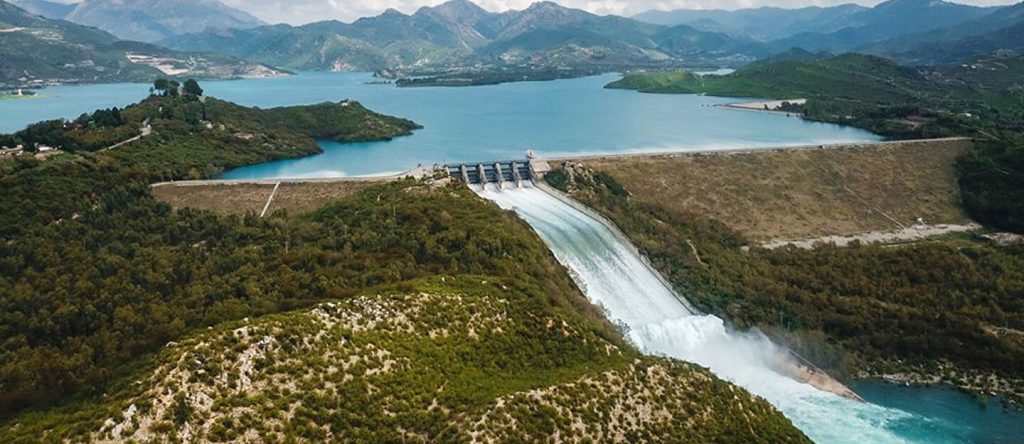
30. Kundol Lake
It, also known as Kundol Dand, is a precious natural resource for the people of Swat Valley. Located in the North of Error Valley at 20.8 kilometers (12.9 mi) away from Kalam, this pristine lake boasts an intriguing tale told by locals. Every night in a month, it says, under the shimmering light of the full moon – when everyone else is fast asleep- there floats a golden bowl right in the center of this magnificent body of water, so beautiful and pure that nothing can compare to its aesthetic majesty – though never once has anyone dared to touch it since they believe what lies inside may be too much for any mere mortal man or woman to bear. Kundol Lake is one of the most beautiful lakes in Pakistan.
31. Lower Kachura Lake
It is a serene mountain lake near Skardu in Gilgit-Baltistan, Pakistan. The lake is 2,500 meters (8,200 feet) above sea level, and this gem beckons adventurers and nature lovers alike. This new body of water sits next to Shangrila Resort Hotel—one of the country’s most well-known hotels because of its excellent restaurant built on top of a scrap metal airplane wreckage from a past war.
32. The Mahodand Lake
Also called Lake of Fishes, it is a lake located in the upper Usho Valley at about 35 kilometers (22 miles) from Kalam in Swat District of Khyber Pakhtunkhwa province of Pakistan. The Mahodand Lake is one of the famous lakes of Pakistan that lies at the foothills of the Hindu Kush mountains at an elevation of 2,865 meters (9,400 feet), surrounded by meadows, mountains, and dense forests. Similarly, the banks of Mahodand Lake are covered by pines and pastures, serving as summer campsites. The Mahodaband lake is fed by melting glaciers and springs of the Hindu Kush mountain and gives rise to Ushu Khwar, the principal left tributary of the Swat River.
33. Lake Manchar
It is spelled Manchhar, the enormous Lake in Pakistan and one of Asia’s most significant. Located away from Sehwan Sharif at 18 kilometers, Manchar Lake gathers water for its surface area from many different sources: streams running off the Kithara mountains. With fluctuations throughout every season ranging from as little as 36 kilometers to a maximum of 500 kilometers squared during monsoons – this body of water has been seen in all shapes and sizes over time.
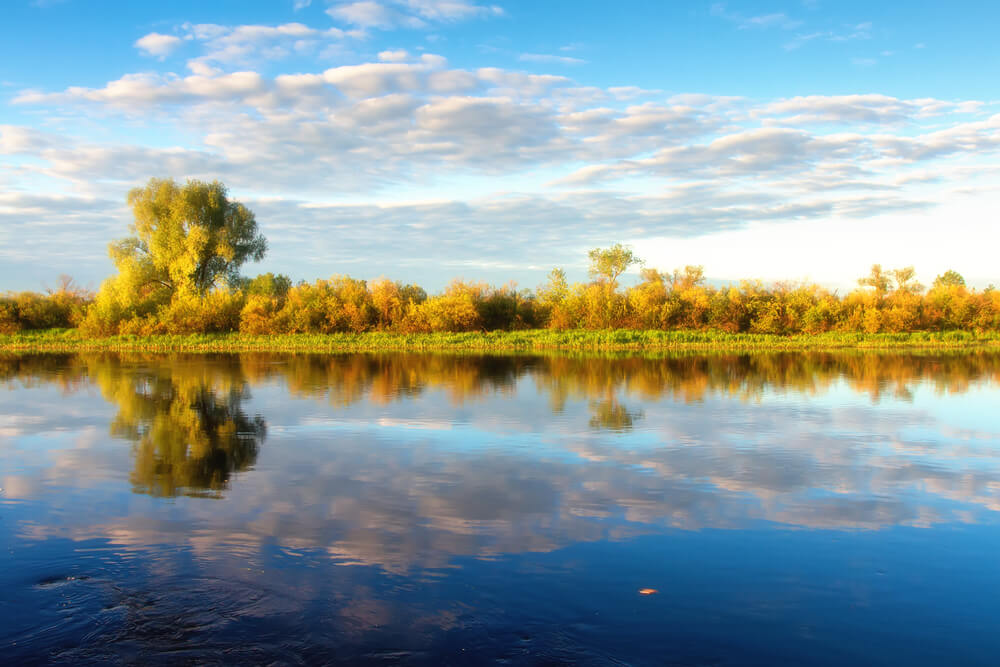
34. Mangla lake
Mangla is situated in Mirpur District, Azad Kashmir, at the edge of Jhelum district Punjab, with the Jhelum river making the borderline. Mangla is an olden town slated to be named after Mangla Devi. It was initially called Mathala. It was also the site of crossing Jhelum by Alexander’s forces in front of Raja Porus.
At the time of the creation of the Mangla dam, the towns of Baral, Baruti, and Thill across the river in the Jhelum district were developed as housing colonies and offices for overseas employees and officials. This has now been transformed into an armed cantonment, which is referred to as the Mangla cantonment because of its location close to the border between Pakistan (Azad Kashmir) and India (Jammu & Kashmir). As such, its military importance has increased since then.
35. Naltar lakes
There are three lakes in Naltar Valley called Bashkiri Lakes. These locations can be found at an altitude range of 3,050-3,150 meters and can vary in color based on whether green or blue, depending on the surrounding plants. Close to the 10-kilometer mark is where you’ll find the first lake, surrounded by pines, and it only takes around 20 minutes to get to by car since it’s nearest to Upper Naltar – the village closest to it. Visitors will want to come from May through October because these two months give visitors perfect weather for exploring this area. If someone decides to go after November, they’ll have difficulty accessing the shore because of all the snow!
36. Namal Lake
It is just 20 miles from Mianwali City and 15 miles from the nearest large village. It was constructed about 109 years ago when Namal Dam was built for irrigation. Though it started as a small dam made for farming purposes, it grew huge enough to provide drinking water for villages around it. Nowadays, it’s used primarily for fish spawning but also provides drinking water for people living in nearby towns.

37. Paristan Lake
It is the highest Lake in Pakistan. It is discovered by mountaineers exploring near Skardu in Gilgit-Baltistan at 4,755 meters above sea level. It is a great tourist attraction for people who can’t afford to explore other mountain ranges.
38. Payee Lake
It can be found in the center of a beautiful meadow, only one hour away from Shogran in Kaghan Valley. Accessible by jeep only because it is so high up, sitting at an elevation of nearly 3000 meters. Many tall peaks around the lake – such as Malika Parbat, Makra Peak, and Musa ka Musala – surround it from all sides.
39. Phander Lake
Named after the lakeside village where it sits, Phander Lake is one of many freshwater sources for this Gupis-Yasin District village. Surrounded by lush forested mountains in every direction but westward, this tall body of water supplies locals with their lifeblood – a pure drinkable resource particularly appealing during prolonged dry seasons. Philander Lake is just over twenty feet deep (sixteen meters), large enough to see everything under its surface, including trees and wildlife.
40. Pyala Lake
It is a small round lake in Jharkhand, the Kaghan Valley of the Mansehra District. It is about 25 miles from Naran.
41. Rainbow Lake
Rainbow Lake is among the most beautiful lakes in the world, surrounded by lush green meadows and clear blue waters. The lake is still peaceful, an inviting paradise for those seeking a tranquil getaway. There are also many different species of animals here, including wild trout. Many people come here to find peace while camping near or on the shores of this gorgeous body of water. Watching sunrises and sunsets here feels like watching art coming alive! There aren’t too many lights at night, but the sky turns from light grey to dark gray- providing an excellent view for those who love stargazing. The rain falls softly upon these lush fields adding one more layer to this intricate ecosystem – one filled with life, color, and happiness for everyone who comes across it.

42. Rama Lake
Located in the Astore Valley, Rama Lake is just one of Pakistan’s famous lakes created by natural flooding. A few oak trees around the lake are covered with leaves and other greets, but most are dead because there isn’t enough rain or sunlight to grow correctly anymore.
43. The Rawal Lake
Rawal Lake is one of the reservoirs supplying potable water to the twin cities of Islamabad and Rawalpindi in Pakistan. It is formed out of the Korang River. This tributary flows out of Margalla Hills. With an area spanning 8.8 km2 and a dam height (250 m) equivalent to 488 meters above sea level, it serves as the primary source of drinking water for two large municipalities.
44. Rush Lake
It is a high-altitude lake in Nagar Valley, Gilgit-Baltistan, Pakistan, near Rush Pari Peak. At 4,694 meters (15,400 ft), Rush is one of the biggest lakes in Pakistan. It is located about 15 km (9 mi) north of Miar Peak and Spantik (Golden Peak) in the Nagar Valley. This gem is located just below where they meet; it is a popular overnight stop for people traveling along either route to Yasin or Passu. The trek to Rush Lake provides views of Spantik, Malubiting, Miar Peak, Phuparash Peak, and Ultra Sar.
45. The Saifullah Lake
The Saifullah Lake, named after a local Sufi saint, is one of the most beautiful lakes in the Swat District of Pakistan. It’s accessible through four-wheel drives or trekking from Mahodand Lake. The journey from Mahodand to Saifullah Lake will take you no more than 15 minutes (10 at most).

46. Saral Lake
It is located on the Neelam and Kaghan Valleys border in Pakistan. It’s at an altitude of 4,100 meters and can be accessed from Sharda by driving up a jeepable track that leads to Gumot National Park, and then through hiking, you can reach it.
47. Satpara Sar Lake
Satpara Lake is a pristine haven of tranquility around the outskirts of Skardu, Gilgit-Baltistan, Pakistan. Fed by the Satpara Stream and situated at an elevation of 2,636 meters (8,650 ft) above sea level. The lake occupies an expansive area of 2.5 km2 with a wondrous island in its center when it becomes full of meltwater from nearby glaciers during the springtime between April and June every year, making it a picturesque sight to behold anyone who cares enough to take in its incredible beauty.
48. Shandur lake
One of the most spectacular places in Pakistan is Shandur Lake. This high mountain pass connects it to neighboring Chitral and Gilgit in the Gilgit-Baltistan District. The top side of the lake is flat, hence its nickname, Roof of the World. Its awe-inspiring beauty has cloud-covered mountains hovering over it, adding to its grandeur. The temperature stays at 14 degrees Celsius throughout, making for a cloudy day all year round, increasing its attractiveness for tourists. Lush green vegetation captures visitors’ hearts, while the surrounding valleys make it an even more phenomenal sight. Thousands flock to this area every July for one of Pakistan’s most significant festivals – the Shandur Polo Festival!
49. The Sheosar Lake
It is a cold alpine lake located on the Western side of Deosai National Park, Gilgit-Baltistan, Pakistan. At a height of 4,142 meters, its location offers plenty of scenic views. Accessible through two routes – one via Astore and another via Skardu. From the main Astore town, it takes about 4 hours of jeep travel through a semi-metal road to reach Chillum, where houses are adjacent to plains.

A jeep can cover the second route from Skardu in a few hours, but if trekked, it will take two days between November and May when the region is snowbound during spring, and there are wide varieties of flowers and butterflies. The most popular season for tourists is summer (June to early September), for which most come for sightseeing and adventure activities such as camping or walking around this spectacular place.
50. Shimshal Lake
It is created by the natural accumulation of glacial meltwater, fed from seasonal streams and springs, and is home to several migratory birds.
The Shimshal Lake, located in the extreme North of Pakistan along the southern border with Xinjiang, China, and situated approximately 40 km from Shimshal Village, has an altitude of 4755 meters above sea level, making it one of the top lakes in Pakistan. Although remote for its location on the borders between China and Gilgit Baltistan, until 2003, the only way to access it was through a newly built road, and over 2000 people live here.
In 1985, construction began on upgrading access roads to this region and building one that would eventually stretch across Shimshal’s terrain, covering 3800 square kilometers. This project was completed successfully in 2003, when highway crossing roads opened, finally linking townships as the Karakoram Highway did.
51. Shounter Lake
It is a magnificent body of water surrounded by snow-capped mountains and lush greenery. This pristine lake is one of the most famous lakes in Pakistan and offers a serene escape for people seeking solace from life or just wanting to enjoy nature for what it has to offer. Accessible only by jeep, this beautiful oasis can be found in Kel Town of Neelam Valley at an elevation of 3,100 meters (10,200 ft). A major highlight here is the magnificent specimen of iris Hookeriana, which grows throughout the region around this large body of water.
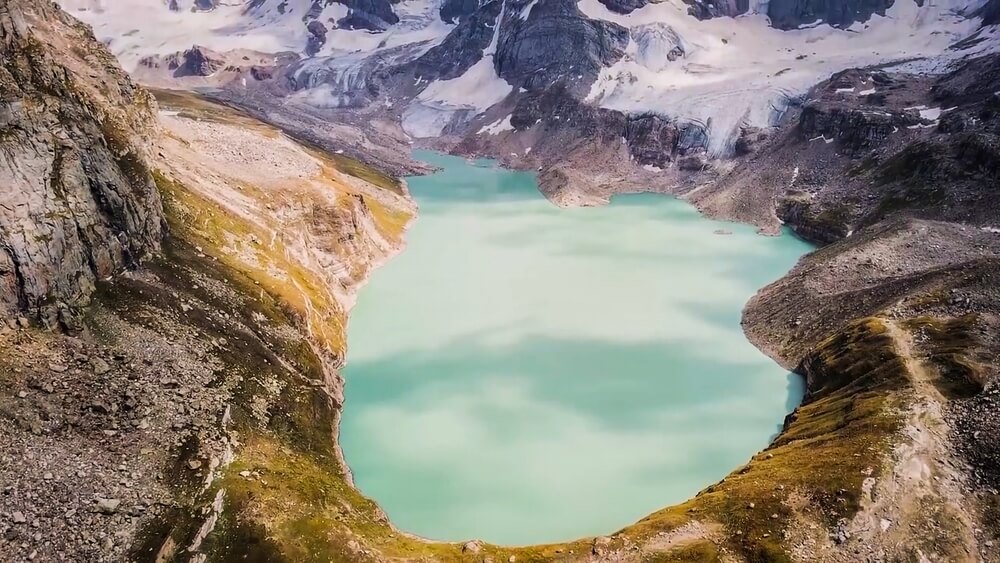
52. Shukargah Lake
It is a serene and picturesque paradise between the deep and lush green forest near Chatorkhand, just off the river Hayool Gol. With its lively stream running through it and clear blue waters, it’s no wonder this natural treasure attracts visitors from all over the country to experience what peace truly feels like. To get there, one must travel along the long road until they reach Chatorkstead – which can be accessed by turning right up a steep slope at Hayool Gol.
53. Simply dam the lake
On this excellent and scenic stretch of land, you’ll find Simply Dam – an eighty-meter high (260 ft) earthen dam on the Soan River. Surrounded by lush green hills and valleys, it provides a clean source of drinking water for Islamabad – the Pakistani capital. Planning started in 1962 but was delayed several times before construction finally finished.
When you take a trip over Sadpara-Simiyar Road or any other nearby village road during daylight hours, there are plenty of activities to explore, including boating and fishing, with permits granted by the Capital Development Authority available only to fishermen.
54. Siri Lake
It is situated in a small valley near Shogran. It can only be reached after climbing steep mountains and winding jeep trails. The lake can also be reached via Kiwai through Payee Valley, just off the Kaghan Highway (Khyber-Pakhtunkhwa).
55. Spin Khwar Lake
Hidden within the eastern side of northern Kundal Lake in North Pakistan lies a singular body of water called Spin Khwar. Having a clear description and being named after the stream in which it collects its energy, this majestic lake possesses unrivaled beauty.
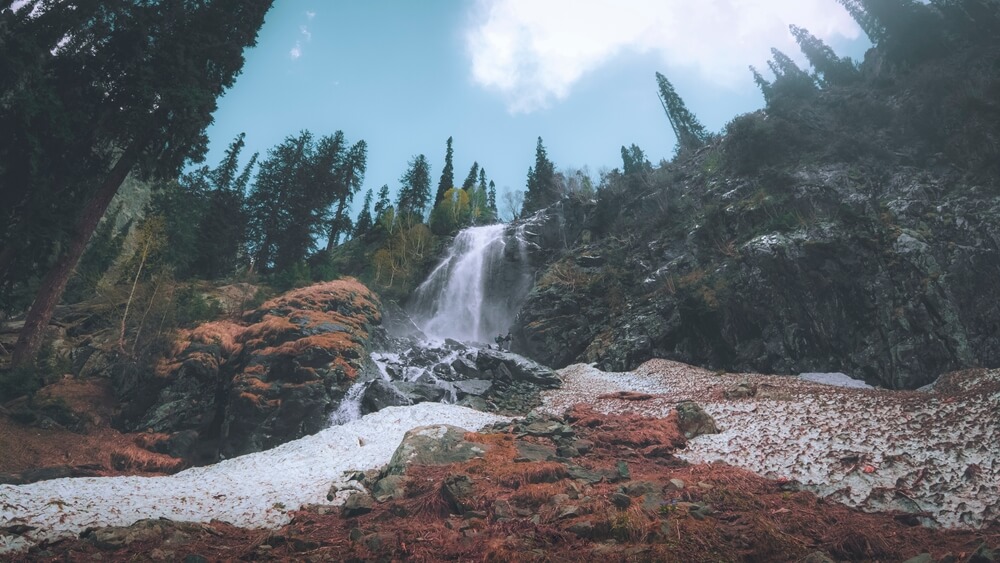
From the west, you can find one particular river coming out of nowhere to encircle Spin Khwar like an overzealous lover before flowing down to Swat Valley – fortunately providing ample nourishment for all those watching eagerly by the shoreline as they cheer endlessly on their companion, making her way upstream again. Its depth rivals that of ancient mountain ranges while it sustains life with so much natural elegance that one could scarcely think anything other than what they want most would ever come true.
56. Subri Lake
Subri Lake, also known as Langarpura Lake, is a stunning and serene body of water surrounded by lush greenery. It is located ten kilometers southeast of Muzaffarabad in Azad Kashmir, Pakistan. The lake is formed where the Jhelum River widens on its way to the Pakistan-India border in the Punjab region.
57. Swank Lake
Swank Lake, more commonly known as Khandowa Lake, sits amongst the peaceful swamplands of rural Punjab. This lake can be accessed from the M2 motorway linking Lahore and Islamabad. The Swank Lake lies 10 kilometers (6.2 miles) from the Kallar Kahar town in the Chakwal District of Pakistan’s Province of Punjab. It lies about 48 kilometers (30 miles) southwest of the city of Chakwal, where a scenic waterfall is also situated near this tourist hotspot which offers opportunities for swimming and diving.
58. Tanda Lake
It is a small but beautiful artificial lake and dam located in Kohat District of Khyber Pakhtunkhwa, Pakistan. It was completed on July 17th, 1967. Covering an area of 405 hectares (2.4km), the original capacity of Tapa Dam was to store 65,000-acre feet (135 million cubic meters) of water and provide a perennial supply of 260 cusecs (764 liters per second)of water for irrigation purposes.
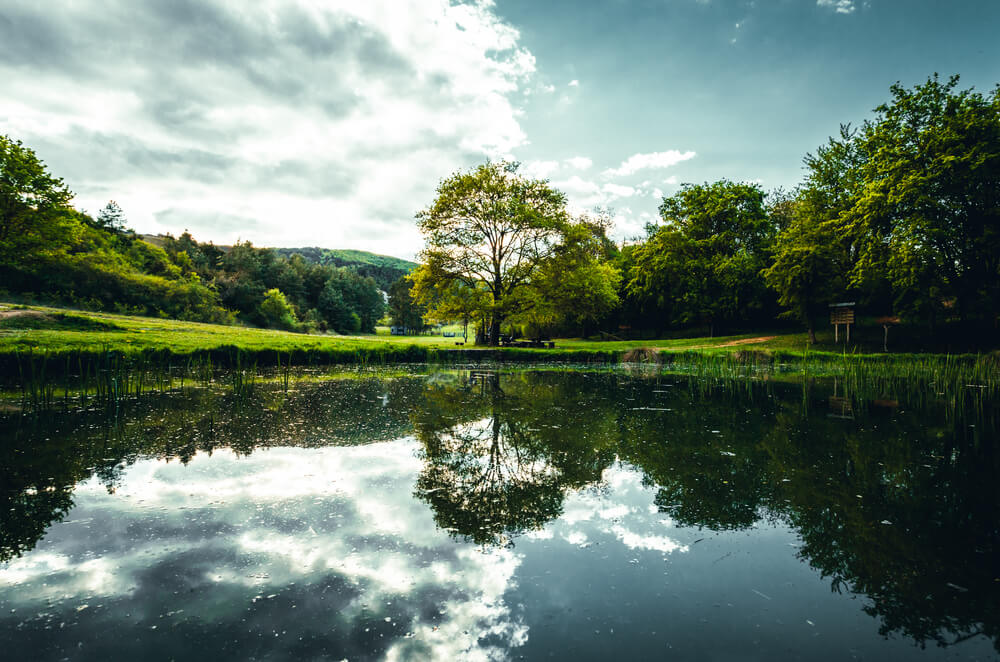
The lake is a protected site under the Ramsar Convention, an international treaty for the conservation and sustainable use of wetlands. Tapa Lake serves as a winter habitat for migratory birds from Siberia and the Caspian regions, who come here in December-February every year.
59. Tarbela Lake
It is an enormous reservoir created by the Tarbela Dam. It rests 3 kilometers from Haripur, in the Khyber Pakhtunkhwa province of Pakistan. One of the biggest lakes in Pakistan, this body of water has remained untouched over time thanks to its out-of-the-way location. If you’re looking for a relaxing and serene place to take some time off while exploring Bangladesh, this might be it!
60. Uchhali Lake
Uchiha is a saltwater lake in Soan Sakaser Valley in Pakistan’s southern Salt Range area. This lake is home to hundreds of migratory birds during the winter, despite the salty water surrounding it. Filled with crystal clear blue waters and surrounded by hills covered with thick vegetation and greenery, Uchhali provides an abundance of scenic beauty without fail each time visitors make their way up this rocky terrain from either side.
For those who feel adventurous enough to venture out onto this seemingly barren expanse, boats can be rented for sightseeing tours around the sea-bound body of water.
61. Kachura Lakes
The Kachura Lakes are the biggest in Pakistan. These three large lakes are in the Skardu District of Gilgit-Baltistan, Northern Pakistan. The two smaller lakes – Lower Kachura Lake and Shangrila Lake – sit atop a vacation resort just beyond Skardu’s town. Upper Kachura Lake (the biggest) is filled with crystal clear water with a maximum depth of seventy meters; this makes it one of Asia’s deepest freshwater lakes. With an average temperature of fifteen degrees Celsius, there isn’t much difference between summers and winters compared to other areas near these high elevations.
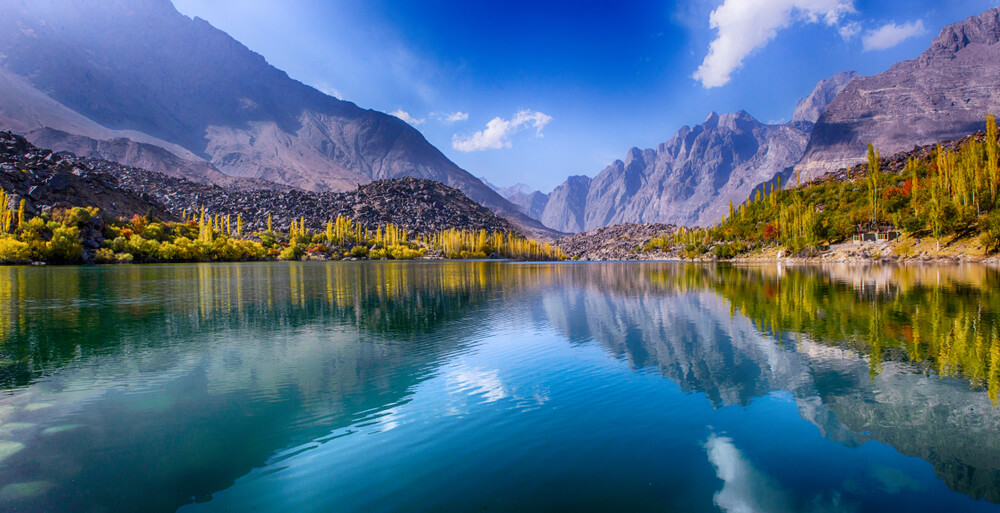
Upper Kachura Lake remains untouched by most travelers, which means that its all-natural beauty thrives here uncontested. Unfortunately, there is no easy way to access the area because of the rugged land around these elevated bodies of water. Locals swear by the vast fruit orchards, which grow tart apricots called Prunus armeniaca.
62. Zharba lake
In northern Pakistan, Zharba Tso, or Blind Lake, is located in the heart of Shigar Valley. It rests at the foot of Mt. Rimo and has been created by the Indus River’s flow into this valley. The lake stores water during times when there isn’t enough precipitation. Still, it feeds off the river’s runoff only when there is excessive rainfall, making it vital to its surrounding villages, such as Nagar’s Khaan village, where they use this water for irrigation purposes.
63. Shakoor Lake
It is a lake that extends 300 km2 on the Indian side of its border with Pakistan, containing about 210 km2 within India. Pakistani people occupy a small portion of the shoreline, while most of it – about 90km squared – falls under India. The Indian government constructed an Indo-Pak Border Road, which joins the highway SH 45 State Highway near Kanjarkot Fort when you cross over to the lake’s shores, making it easier for people who live there to come back and forth.
The high salt extraction from the Pakistani side may have led to too much damage being done to the surrounding area – including destroying precious jungle habitats and mangroves and seriously endangering the regional ecosystem. You can see many animals disappearing from their natural habitat because they’ve gone extinct or died out entirely because they don’t know how else to live without food or water sources around them anymore, thanks to human consumption practices like these damaging actions.
64. Saif ul Muluk
It is a glacial pond in the mountains overlooking the forested Kaghan Valley. Located at 3,224 meters high, it is one of the most beautiful lakes in Pakistan. Formed by melting snow and cooling streams frozen as they passed through this valley, Saiful Muluk Lake has been around for centuries – ever since what scientists call the greater Pleistocene Era. This 300-thousand-year period spanned from when much of Northern Asia was blanketed in ice over what would be today’s India, China, Russia, and Canada; until global warming became so intense that it melted all these enormous glaciers down. One result? A deep depression where there used to be lots of snow–now standing tall instead are all these trees for miles around me.
65. Ratti Gali Lake
It is a freshwater alpine glacial lake in the Neelum Valley of Azad Kashmir, Pakistan. It is one of the top lakes in Pakistan, ranging from 3,683 m to 4,483 m. Fed by the nearby glaciers for its water supply, Ratti Gali Lake provides a perfect abode for trout and other aquatic species during summer and winter months alike.
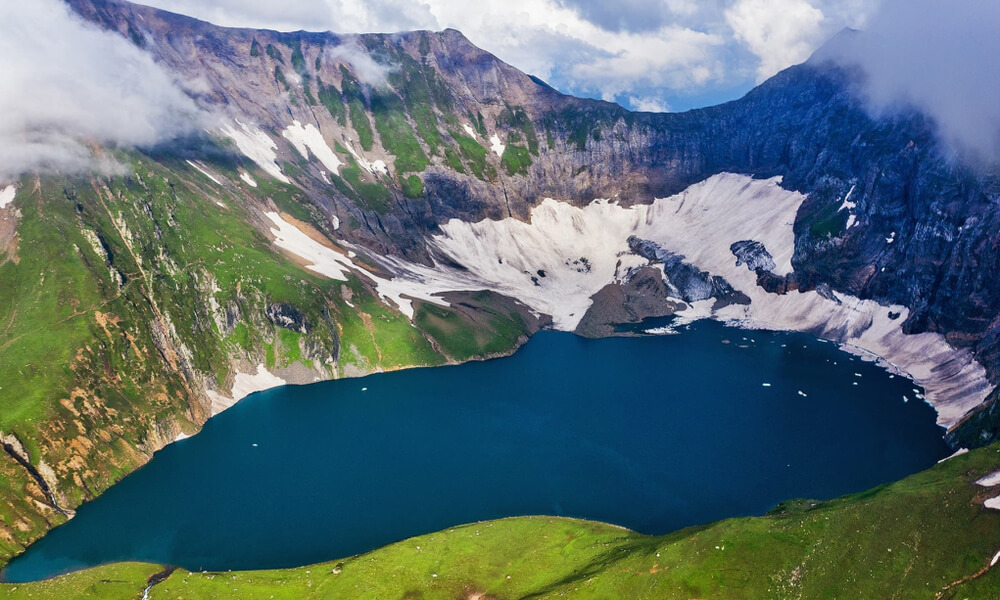
66. Dudibach Lake
Dubach Lake is located in Naran, Kaghan Valley, near Barisal. From Barisal, a track led towards Mula di Basti. A settlement made up of shepherds during the summer. After trekking for 4-5 hours from there, one must walk another 1-1/2 hours or so before arriving at the destination – which is breathtakingly beautiful and tranquil despite its imposing beauty. It has an elevation of 3,897 meters above sea level and is located west of Sarai Gali and southwest of Gal-di-Gali.
67. Ghorashe lake
Ghorashe Lake is a beautiful freshwater lake in Kharmang District, Gilgit Baltistan, Pakistan. The lake is known for its beautiful scenery and is also home to several migratory birds. The lake is also famous among tourists due to its scenic beauty and is a great place to relax and enjoy peace. The lake has a surface area of about. The lake is fed by several small tributaries that flow into the lake from the surrounding mountains. The lake’s water level occasionally fluctuates due to natural causes such as melting snow and rain. The lake is surrounded by beautiful mountains and several scenic spots offering stunning views.
The lake is also famous among tourists due to its scenic beauty and is a great place to relax and enjoy peace.
68. Handarap Lake
It is an alpine freshwater reservoir situated in the Shandur Valley. This high-altitude lake provides fresh water to villages and attracts tourists due to its beauty. As one of the lakes in Baltistan, it is home to trout, initially from tributaries (rivers).
The lake can be reached after a long journey from Islamabad. First, travelers travel along the Karakoram Highway, then continue on the Gilgit-Chitral Road towards the town of Shandur until reaching Handarp Village. The last stage is a four-hour trek up a mountainside that offers stunning views of nature all around.
With time, a Jeepable road has been constructed for these long treks alongside breathtaking landscapes up cliffs – perfect for tourism and exploring this beautiful region without strain or difficulty.
69. Lulusar Lake
Lulusar Lake (also spelled Lulusir) is 3,410 meters high and is considered one of Pakistan’s top lakes. It is the headwaters for the Kunhar River, which flows southward towards every village within this valley, including Jharkhand Naran, Kaghan, Jared, Paras, and Balakot. Located only 50 kilometers from Naran – this sacred place can be accessed by most modes of transportation, such as cars, buses, or even horses. Lulusar or Lalusar is a group of mountain peaks and a lake in the Kaghan Valley in the Khyber-Pakhtunkhwa province of Pakistan.

70. Katpana lake
The lake is located near the bottom of the Katpana Desert. In the summertime, the lake is well-covered with leaves and slightly different from other lakes in Pakistan. There are no hotels or restaurants right next to it – but there are some farther away if you need them. Going for a nice hike while enjoying nature at its finest is worth it!
FAQs
1. How many lakes are in Pakistan?
Ans: There are 70 lakes in Pakistan, all known for their distinctive location and natural beauty.
2. Which is the largest Lake in Pakistan?
Ans: Pakistan’s largest Lake is Manchar Lake, which covers an area of over 260 square kilometers.
3. Which is the most beautiful Lake in Pakistan?
Ans: Ansoo Lake is the most beautiful Lake in Pakistan. The lake is located in Kaghan Valley in the Mansehra district of Khyber Pakhtunkhwa and is surrounded by spectacular mountains. The lake is 3,957 m above sea level.
The lake is small but has many beautiful spots and a tiny island you can easily reach by boat. Tall trees surround the lake, and all the surrounding areas are green and lush. There are also a lot of fish in the lake that you can enjoy fishing. There are many small cottages and restaurants around the lake that you can visit if you want to relax and dip in the water. Ansoo means “teardrop” in Urdu, so the lake’s name is derived from the shape of the water.
4. What is the most diminutive Lake in Pakistan?
Ans: Baghsar Lake is the largest in Pakistan and is famous for boating, swimming, and fishing. It is about 100 kilometers south of Islamabad and 300 kilometers south of Rawalpindi. The Bhirrana River feeds the lake, which originates in the Achanai Valley of Bhimber District and flows through the northern part of the Samahni Valley before emptying into Baghsar Lake.
The Bhirrana is dammed at the confluence of the Bandala River and the Samahni River to form the Mahal. The Mahal flows into Baghsar Lake, where the Bandala River joins it from the south. The Bandala River originates in Samahni Valley and flows through the northern part of the Samahni Valley before emptying into Baghsar Lake. The Bandala River is dammed at the confluence of the Samahni and Bhirran.
5. Which is the deepest Lake in Pakistan?
Ans: Karambar Lake is one of the most beautiful lakes in Pakistan and is also considered the deepest lake in the valley. Its maximum and mean depths are 55m and 17.08m, respectively.
Conclusion
In many ways, Pakistan is one of the most beautiful countries in South Asia. However, people do not enjoy living near these lakes in Pakitan because they are polluted by industrial waste or surrounded by human settlements that spoil them. The Indus basin covers approximately 2,500 square kilometers (970 sq mi) of land between the Himalayas to the North and the Thar Desert to the south. The total area of all these lakes, plus other smaller ones, is about 6,000 square kilometers (2,400 sq mi).
Pakistan’s climate varies from hot summers to cold winters, depending on the location. Some areas around Lake Mansarovar have little precipitation throughout the year. In contrast, others receive hefty rainfall during summer when water levels rise above standard limits due to unseasonal rains or flooding.
Individual Posts
-
ANSOO LAKE KAGHAN VALLEY
-
Keenjhar Lake Thatta
-
Swaik Lake Kallar Kahar
-
Lulusar Lake The Mysterious and Majestic Place in Kaghan
-
Banjosa Lake Rawalakot, Azad Kashmir
-
Ratti Gali Lake in Neelum Valley, Azad Kashmir
-
The Majestic Kallar Kahar Lake in Chakwal, Pakistan
-
Dudipatsar Lake Kaghan Valley, Pakistan
-
Attabad Lake Hunza
-
Mahodand Lake Kalam Valley, Swat
-
Saif ul Malook Lake – The Surreal Beauty
-
Rainbow Lake in Gilgit Baltistan – A Hidden Natural Gem
-
Haleji Lake Thatta – The Perfect Place to Relax and Unwind
-
Rawal Lake Islamabad, Pakistan
-
Chitta Katha Lake – Kashmir’s Glacial Jewel
-
Sogha Lake Khaplu – A Miraculous Crystal Water Lake
-
Rama Lake
-
Borith Lake
-
Shangrila Lake
-
The Harnoi Lake in Abbottabad – A Natural Beauty
-
Kundol Lake in Swat Valley
-
Sheosar Lake – A Detailed Guide
-
Samundar Katha Lake
-
Upper Kachura Lake
-
Explore Satpara Lake, Gilgit Baltistan
-
Manchar Lake, Sehwan
-
The Majestic Katora Lake in Kumrat Valley

